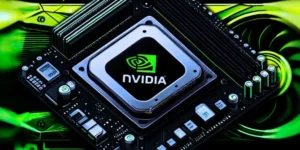PC building has evolved beyond performance and functionality, and aesthetics now play a huge role. One of the biggest design trends in recent years is the vertical GPU mount, which allows graphics cards to be positioned upright, facing the side panel. While initially seen as a visual upgrade, vertical GPU mounting has practical advantages that appeal to gamers and enthusiasts.
Enhanced Aesthetics and Showcase Appeal
For those who invest in high-end GPUs with RGB lighting and stylish shrouds, a vertical mount is the best way to display their graphics card. Instead of hiding the cooling fans and custom backplates, vertical mounting places the GPU front and center, making it the focal point of the build. Combined with a tempered glass side panel, this creates a cleaner and more premium look than traditional horizontal mounting can achieve.
Improved GPU Cooling in Certain Cases
While airflow concerns exist, vertical mounting can improve cooling in specific builds. In cases with poor airflow or limited space near the PCIe slots, a vertically mounted GPU can reduce heat buildup by providing more direct exposure to fresh air. Additionally, this orientation can reduce GPU sag, which can strain the PCIe slot and cause connectivity issues over time.
Reducing GPU Sag and Strain on the Motherboard
One of the most overlooked benefits of vertical GPU mounting is the elimination of GPU sag. Large, heavy graphics cards, especially with triple-fan coolers and metal backplates, often droop over time when mounted horizontally. This not only looks bad but also puts stress on the PCIe slot. A vertical mount secures the GPU in a fixed position, preventing long-term damage to the motherboard.
Compatibility with Modern Cases and PCIe Riser Cables
Many modern PC cases now include vertical GPU mounts as a standard option. With PCIe riser cables improving in both speed and reliability, performance concerns related to bandwidth limitations and latency have been mainly resolved. Enthusiasts can now enjoy entire PCIe Gen 4 speeds without noticeable performance loss, making vertical mounting a practical choice.
Conclusion
The rise of vertical GPU mounting isn’t just about aesthetics. It provides practical advantages like reduced sag, improved cooling in specific setups, and better compatibility with cases. While airflow considerations are crucial, modern cases and high-quality PCIe riser cables have made vertical mounting a viable and increasingly popular choice for PC builders aiming to enhance aesthetics and functionality.










